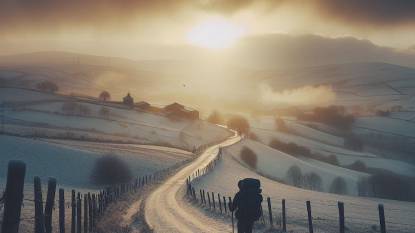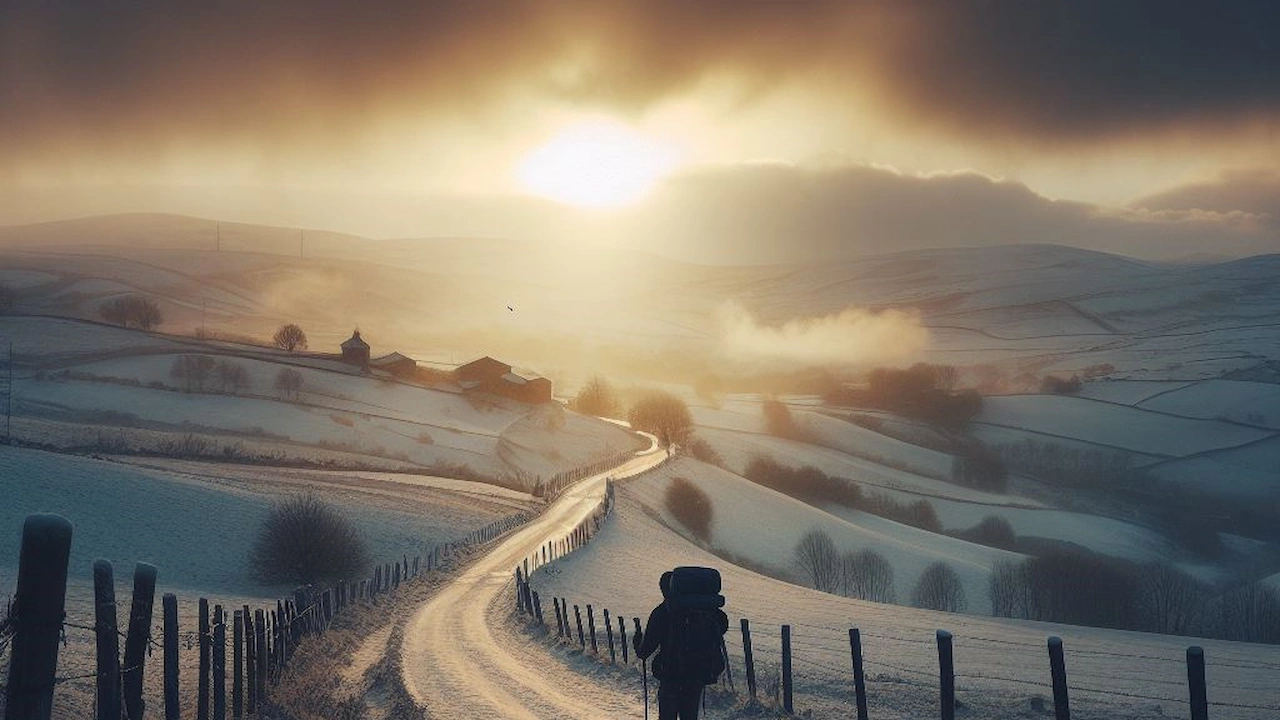
Walking the Camino in Winter: What You Need to Know
Posted: | Updated:
Reading time: 22 minutes
Walking the Camino in Winter: What You Need to Know
Posted: | Updated:
Reading time: 22 minutes
By: Simon Kemp, Editor
The Camino de Santiago in northern Spain has been one of the most renowned Catholic pilgrimage routes since the 9th century when the apostle St. James’ remains were discovered in Santiago de Compostela. Hundreds of thousands embark on the Camino each year, with peak season being spring through fall when mild temperatures make walking more pleasant.
Many people ask “Can you walk the Camino in Winter?” and the answer is absolutely you can, Yes! However there are specific precautions that you should take and extra things to consider before embarking on a long hike during the winter months and potentially bad weather.
Some intrepid pilgrims actually prefer to make their journey during the Winter months, perhaps to spend their Christmas in Santiago de Compostela with it’s famous markets and cultural events calendar. I go into more good reasons below.
In Spanish, “winter” is translated as “invierno” and in Galician, “winter” is translated as “inverno”. I will use these terms throughout the following article. To be clear, this article is about walking the Camino in wintertime and not about the “Camino de Invierno” which is a specific and very recently created Camino route. I will cover that route in a different article.
Reasons to Walk the Camino in Winter
Here are some of the best reasons for hiking the Camino during the winter months:
- Avoid the crowds and busyness of the summer months. The trail and albergues are much less crowded in winter, which allows you to truly experience the solitude and reflective nature that the Camino is known for. Without crowds you can hike at your own pace, stop when you want, and enjoy the tranquil landscapes.
- Fewer Pilgrims means less Crime. Incidents of theft along the Camino are far fewer during the winter months
- Experience cooler weather if hiking in summer is too hot. The temperatures along the Camino in winter can get brisk, but for many hikers that is far more pleasant than baking in the hot summer sun. The cool air is invigorating and refreshing.
- See the landscape in a different season – the snow-capped mountains can be very beautiful. Winter brings a stark new beauty to the Camino, with the iconic mountain ranges coated in glistening snow. Leafless forests and meadows reveal open vistas not visible other times of the year.
- Feel a sense of accomplishment by braving and overcoming the winter conditions and completing the Camino. Finishing the Camino in cold rain, mud, or even snow brings immense satisfaction. You’ll join the ranks of dedicated winter pilgrims.
- Enjoy holiday decorations and festivities in villages along the route in December. The historic villages often have holiday lights, Nativity scenes, and other decorations that create a festive atmosphere during December. Winter village festivals also give you a window into traditions.
- Take time for introspection and reflection during the quieter, solitary winter walk. With fewer hikers, more solitude, and the slower pace of winter, you’ll find ample time for contemplation about life’s big questions. It can be a moving spiritual experience.
- Appreciate the historic pilgrimage during a time of year when only the dedicated walk. To complete the Camino in winter, taking on the elements, channels the piety and devotion of ancient pilgrims.
- Get in shape for the coming spring/summer hiking season by hiking all winter. Winter hiking strengthens your legs and endurance so you can fully enjoy longer summer hikes. It’s ideal training.
While summer and fall are the most popular times to hike the famous Camino de Santiago pilgrimage route, more and more intrepid travelers are opting to take on this iconic walk during the colder winter months. Hiking the Camino in winter offers pilgrims unique advantages and experiences that become the source of fond memories. The trails and accommodations are far less crowded, allowing for more solitude and introspection.
The quiet winter landscape possesses its own stark beauty, with snow-capped mountains and leafless, windswept forests. Days are shorter and colder but when the sun comes out, its warmth on your back feels that much more special. The winter pilgrim quickly learns to appreciate the little village holidays and decorations that brighten the long nights. Most importantly, finishing the Camino under adverse conditions brings a deep sense of personal accomplishment. With proper planning, gear, and determination, winter may just provide the perfect Camino journey.
The Allure of the Off-Season Camino
In recent years, more and more adventurous pilgrims have been setting out to conquer the Camino in the off-season colder months between November and February. One recent survey showed that nearly 15% of Camino pilgrims now walk during inverno, compared to less than 5% a decade ago.
While the colder temperatures and unpredictable weather pose challenges, walking the Camino in the colder months has its appeals. The route is far less crowded, allowing pilgrims to fully immerse themselves in the experience rather than being surrounded by throngs of people. The snow-dusted landscapes along the way create strikingly beautiful scenery. The holiday vibes in villages lends a special charm as well. Completing the pilgrimage in wintertime gives many people a sense of extra accomplishment.
Braving the Elements
Temperatures along the Camino routes fluctuate but average 35-55°F (2-13°C) during the day. However, mercury frequently dips below freezing at night and during cold snaps. Icy rain, snow, brute winds up to 60 mph, dense freezing fog, and blizzards are all possible weather hazards.
Pilgrims need to be prepared with extensive cold and wet weather gear. Key clothing items include merino wool or synthetic thermal base layers, mid-layer fleece or down insulations, windproof and waterproof outer shells (tops and bottoms), glove liners and heavy-duty insulated gloves or mittens, wool hiking socks, weatherproof hiking boots, gaiters, warm hats and buffs to cover the face. Having backup clothing is essential in case primary layers get wet.
Other gear necessities include hiking poles with snow baskets for stability on icy, muddy or snowy terrain, pack covers or liners to keep possessions dry inside, and emergency gear like bivvy emergency shelters and whistles for alerting help if needed. Overnight campers will need tents capable of handling high winds and snow loads.
The Route Less Traveled
The cold weather Camino is decidedly not for the faint of heart or unprepared. But for those undaunted by the cold and wet, the rewards are immense – stunning beauty, special memories, and a true sense of accomplishment. As one veteran cold season pilgrim stated: “It was the hardest thing I’ve ever done, but in the end, the most magical.”
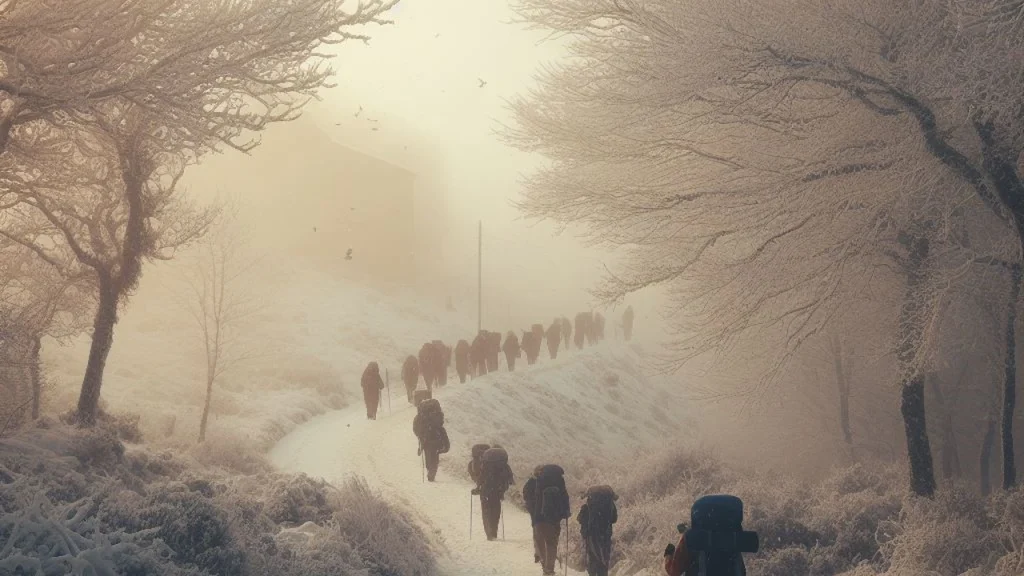
Winter Weather in Northern Spain
Northern Spain is a large area that includes several autonomous communities, such as Galicia, Asturias, Cantabria, Basque Country, Navarre, La Rioja, and Aragon. The weather can vary significantly depending on the location, altitude, and proximity to the coast or the mountains. However, in general, Northern Spain has a mild and humid climate, with cool winters and moderate rainfall.
The average temperatures in the inverno months range from 5°C to 15°C (41°F to 59°F), but they can drop below freezing in some inland or mountainous areas. Snow is not uncommon in the Pyrenees, the Cantabrian Mountains, or the Picos de Europa, where you can enjoy skiing and other sports. On the other hand, the coastal areas have milder temperatures and less snow, but more rain and wind.
Winter Temperatures in the Northern Spanish Cities
The table below shows the average temperatures during December, January, and February in some of the main cities of Northern Spain for the past 10 years (2012-2021), according to Worlddata.info.
| City | Average min temperature (°C) | Average max temperature (°C) |
|---|---|---|
| A Coruña | 9.1 | 14.3 |
| Bilbao | 6.4 | 14.1 |
| Gijón | 7.8 | 14.4 |
| Logroño | 2.8 | 11.5 |
| Pamplona | 2.4 | 10.6 |
| San Sebastián | 7.1 | 13.6 |
| Santiago de Compostela | 5.7 | 12.5 |
| Zaragoza | 4.1 | 12.8 |
Winter Temperatures in Northern Cities As you can see, the temperatures are not too extreme, but they can vary a lot depending on the city and the day. Therefore, it is important to check the weather forecast before your trip and pack accordingly.
Winter Temperatures in the Spanish Mountain regions
If you are planning to walk the Camino routes across the mountain regions of northern Spain, you might be wondering what the weather is like and when is the best time to go.
To give you a better idea of what to expect, we have created a table of average temperatures during December, January & February in some of the mountain regions of northern Spain for the past 10 years (2012-2022). We have used data from Worlddata.info and Travelinginspain.com to compile this table. Please note that these are approximate values and that they may differ from year to year.
| Region | Altitude (m) | Dec Avg Min (°C) | Dec Avg Max (°C) | Jan Avg Min (°C) | Jan Avg Max (°C) | Feb Avg Min (°C) | Feb Avg Max (°C) |
|---|---|---|---|---|---|---|---|
| Pyrenees | 1500 | -2 | 4 | -4 | 2 | -3 | 4 |
| Cantabrian Mountains | 1000 | 1 | 9 | -1 | 7 | 0 | 9 |
| Sierra de Guadarrama | 1800 | -3 | 5 | -5 | 3 | -4 | 5 |
| Sierra de Gredos | 1500 | -1 | 7 | -3 | 5 | -2 | 7 |
| Sierra Nevada | 2000 | -4 | 6 | -6 | 4 | -5 | 6 |
Winter Temperatures in Mountain Regions As you can see from the table, the temperatures can be quite low in midwinter, especially at higher altitudes. You will need to pack warm clothes, layers, gloves, hats, scarves, and boots if you want to enjoy your Camino! Check the weather forecast before you go, as some roads may be closed and vehicles may require chains due to snow or ice.
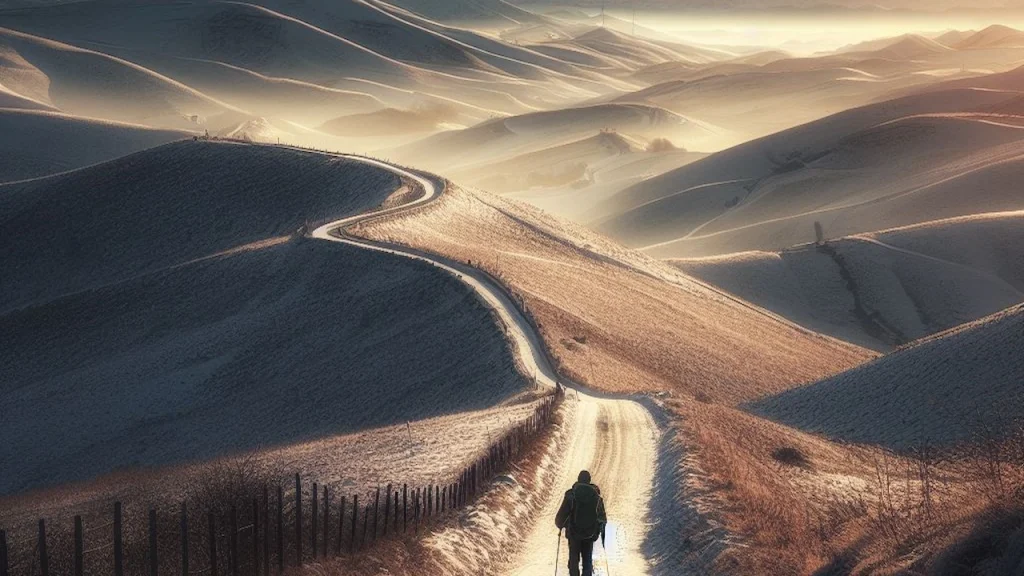
Planning Your Cold Weather Camino
Preparing for a cold weather Camino requires extensive advance planning. While challenging, a well-organized journey can create memories to last a lifetime. Key factors to research and arrange before you set foot on the trail include: choosing your route wisely, optimal timing, securing required permits, deciding on guided or self-guided, and booking accommodations well in advance.
Choosing a Route for a Winter Camino
The most popular route is the Camino Frances starting in St. Jean Pied de Port, France and covering ~500 miles over 5-6 weeks to reach Santiago de Compostela. This route offers the full pilgrim experience and passes through historic cities like Pamplona and Leon. However, the elevation gains make it more prone to snow and ice.
Several other inverno-friendly options exist:
- Camino Portuguese Coastal Route – Runs ~250 miles along the coast from Porto to Santiago. Staying at lower elevations near the ocean means less snow, but higher rainfall and winds. The route passes through quaint coastal towns dotted with cafes and seaside hotels.
- Camino Portuguese Central Route – Inland route from Porto covering ~230 miles. Passes through rugged mountains and forests, reaching up to 5,250 ft elevation at the highest point. More prone to snow closures at mountain passes. Excellent for nature lovers.
- Camino Primitivo – Starts in Oviedo and covers ~280 miles en route to Santiago. Considered the most scenic and historic route. Also the most challenging, with mountains up to 4,500 ft elevation that can see significant snowfall.
- Camino de Invierno – The Winter Way, is a recently created pilgrimage route that connects Ponferrada with Santiago de Compostela, passing through the River Sil Valley and the Ribeira Sacra. Apparently this southern variant of the Camino Frances was used by medieval pilgrims to avoid the mountain passes of Foncebadón and O Cebreiro during the winter months.
Those short on time may consider just doing the final 100-200km into Santiago starting from Sarria or Portomarín. This portion can be completed in 1-2 weeks.
When to Go
- November-December – Lower chance of heavy snowstorms that lead to path closures and avalanche risks. But higher rainfall likely, especially on coastal paths. Daytime highs average 42°F/6°C. More accommodations will still be open.
- January-February – Increased snow potential, especially at higher mountain elevations. Colder average temps of 36°F/2°C with more dips below freezing. Higher chance of certain albergues and services being closed until spring.
Try to avoid Easter week in April when crowds swell and accommodation prices spike. Some pilgrims aim to time their arrival in Santiago for New Year’s celebrations.
Permits
- A Pilgrim’s Passport is required to walk the Camino and stay in albergues. They can be obtained from churches, Spanish tourism offices, prior Camino organizations, or online for ~$10 USD. Get at least 2-3 pages stamped daily at restaurants, churches, albergues, etc.
- Some final stretch cities like Sarria require registering with the local pilgrim’s office to walk the last ~100km into Santiago. This helps them monitor crowds. Provide your passport number when registering.
Guided or Solo?
- Self-guided allows for the most flexibility but requires extensive planning and bad weather hiking experience. It’s best suited for experienced solo invierno backpackers. Expect long cold stretches without support.
- Guided group tours are offered through companies like Caminoways.com, Gadventures.com, etc. Typical 12-14 day trips cost $3,500-$5,000 per person including meals and lodging. More support but less freedom. Look for small group sizes under 10.
Booking Accommodation in Winter
Popular albergues and hotels fill up weeks in advance, especially during peak holiday times. Where possible, reserve your rooms 1-2 months prior. Expect to pay $40-$75/night for basic hotel rooms along the route. In Santiago, rates for a single room with bathroom may be $100+.
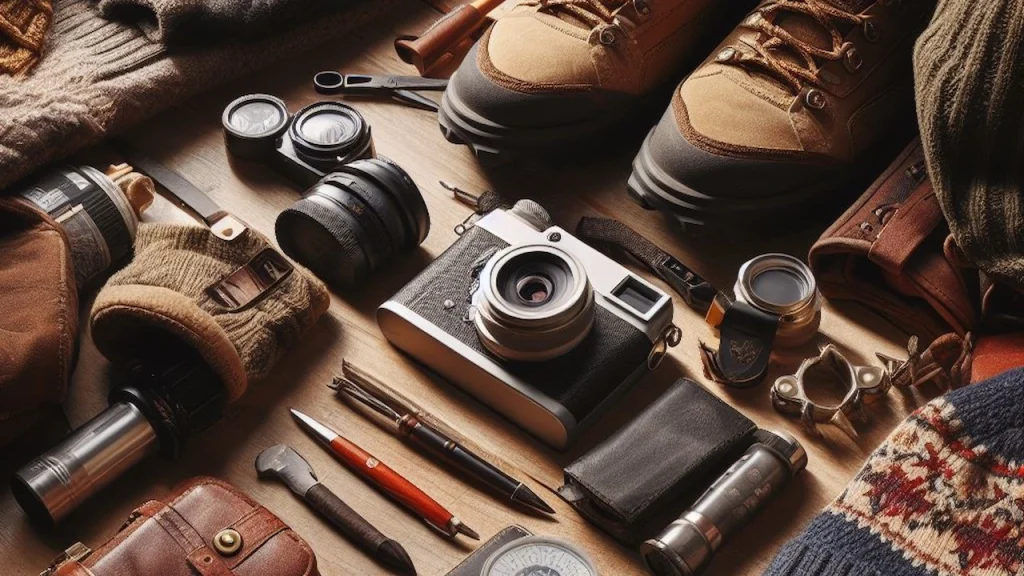
Winter Packing Essentials
The gear you carry will make or break your winter Camino experience. Pack smart by focusing on layered clothing, waterproofing, footwear, and emergency essentials. Remember you’ll be carrying everything on your back for up to 12 hours a day.
Winter Clothing
- Base layers – Merino wool or synthetic long underwear tops and bottoms for moisture wicking. ~$50-75 each.
- Insulation layers – Fleece jackets ($100-150), down puffer coats ($250+). Bring 2 warm mid-layers.
- Outer shells – Waterproof/windproof jackets ($150+) and pants ($100-150). These are special waterproof jackets and pants designed for winter hiking. These are designed to keep you dry and warm in cold, wet, and windy conditions. Some of the best invierno waterproof jackets include:
- Fjällräven Bergtagen Eco-Shell: This jacket is the best in test and is known for its quality and comfort.
- Mountain Equipment Makalu: This jacket provides the best value.
- Haglöfs Spitz GTX Pro: This is the best technical winter waterproof jacket.
- Waterproof pants – It’s important to look for ones that are waterproof, windproof, and insulated to provide warmth. Features like sealed seams, ankle zips, and built-in gaiters can also be beneficial for winter hiking. Always ensure to try on the gear before purchasing to ensure a comfortable and secure fit.
- Socks – Wool hiking sock pairs ($20-30). Avoid cotton.
- Headwear – Winter knit hats ($25-40), buffs to cover face ($20).
- Winter hiking boots – Specially designed hiking boots for inverno. These boots are designed to keep your feet warm, dry, and provide good traction in snowy and icy conditions. Current examples are:
- KEEN Targhee III Waterproof Mid: These boots are adaptable, durable, and great for all-around invierno wear.
- Oboz Bridger 7” Insulated: These boots are specifically designed for women.
- Xero Alpine Boot: These are minimalist boots.
- Salomon Cross Hike 2 Mid GORE-TEX: These boots provide the best traction.
- Merrell MTL Thermo Rogue 4: These boots are great for longer miles in mixed terrain.
Other Gear
- Backpack – 50-60 liters to fit all gear. Look for waterproofing. ($150-200)
- Sleeping bag – Rated to at least 15°F / -10°C ($200-300)
- Trekking poles – Adjustable poles provide stability on icy terrain ($70-100)
- Water bottles – Insulated bottles/bladder to prevent freezing ($20-40)
- Medical kit – Blister supplies, OTC meds, first aid ($50)
Emergency Essentials
- Bivvy sack – Lightweight emergency shelter ($30)
- Whistle/flare – To call for help if injured ($5-10)
- Power bank – Recharge phones/GPS in remote areas ($40-60)
- Cash – In case ATMs are unavailable along the route (have at least 100 EUR)
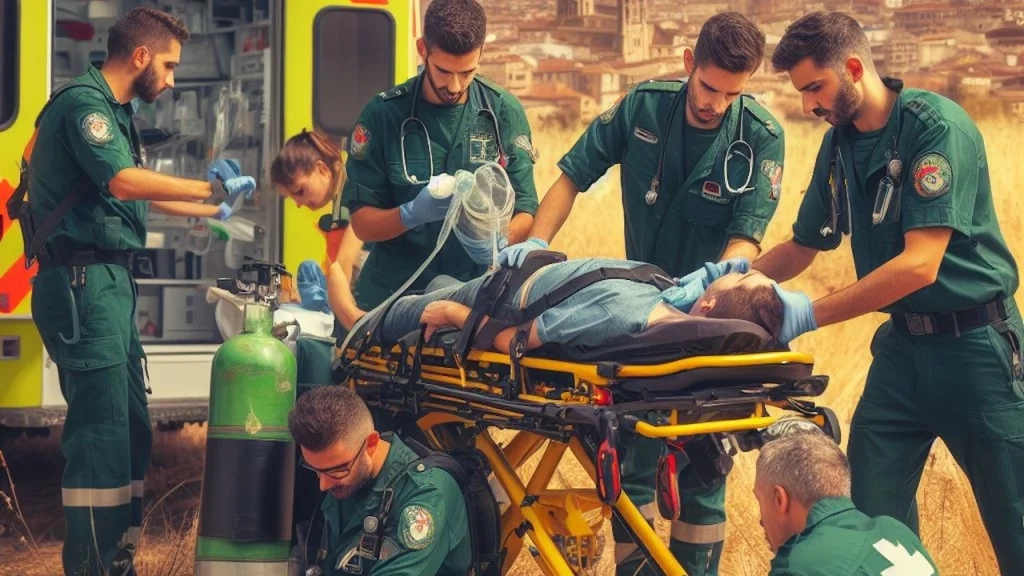
Staying Safe on the Trail in Winter
Walking the Camino at this time of year poses unique risks that require diligent preparation and caution. It’s critical to continually assess conditions, prepare for emergencies, and know how to identify and respond to serious hazards like hypothermia.
Assessing Conditions
- Check detailed hourly and daily weather forecasts each morning before setting out. Avoid starting in severe cold, high winds, whiteout fog or snowstorms. This may require postponing or rerouting day’s walk.
- Watch carefully for icy patches on the trail, especially at high mountain elevations or areas shaded from sun. Use trekking poles for stability and wear footwear with strong traction. Take very slow, deliberate steps.
- After heavy snows, beware of increased avalanche risk on mountain paths. Check with local pilgrim’s offices on risk levels and consider alternate routing. Avoid steep slopes with signs of instability.
- In fog, navigate carefully with map/GPS. Poor visibility increases chances of slipping or wandering off trail.
Avoiding Hypothermia
- Know the warning signs of impending hypothermia – shivering, lack of coordination, fatigue, slurred speech, irrational behavior. Take these very seriously.
- Act quickly to get out of the elements and rewarm if exhibiting signs. Seek shelter and replace wet clothes with dry layers. Use emergency blankets and shared body warmth. Stay hydrated and nourished.
- Without treatment, hypothermia can progress to violent shivering, loss of consciousness, respiratory or cardiac arrest. Remain vigilant when tired or at high elevation.
- Stay nourished with high calorie foods to fuel body heat, and well-hydrated to maintain energy. Hunger and dehydration speed hypothermia.
Handling Emergencies
- Carry a whistle or flare to call for help if seriously injured or immobile. Know your precise location coordinates if possible.
- Consider taking a satellite emergency communicator like a Garmin inReach device. This allows you to trigger an SOS and message emergency contacts from anywhere.
- Research emergency shelters and rescues services available along your chosen route. Make sure you have their contact info handy.
- Have contingency funds in case you need to take taxis or stay in hotels if conditions turn dangerous. Don’t take unnecessary risks.
Calling for Help
Here are some key Spanish emergency services phone numbers to have handy when hiking the Camino in winter:
- General emergency number in Spain: 112
- Guardia Civil (Civil Guard – can coordinate emergency mountain rescue): 062
- Ambulancia (Ambulance): 061
- Bomberos (Fire Department): 080
- Policía Nacional (National Police): 091
- Policía Local (Local Police): 092
It’s also a good idea to have the direct contact numbers for local pilgrim’s offices and albergues along your chosen route. They can provide assistance or call rescue services if needed.
When calling emergency services in Spain:
- Briefly describe the emergency situation and your exact location.
- Specify if you need ambulancia (ambulance), bombers (fire), policia (police), or guardia civil/rescate en montaña (mountain rescue).
- Repeat your location details slowly and clearly.
- Answer any questions. Don’t hang up until told to do so.
Having the key emergency numbers handy, knowing your location, and acting quickly are all critical for staying safe when hiking the Camino in cold conditions.
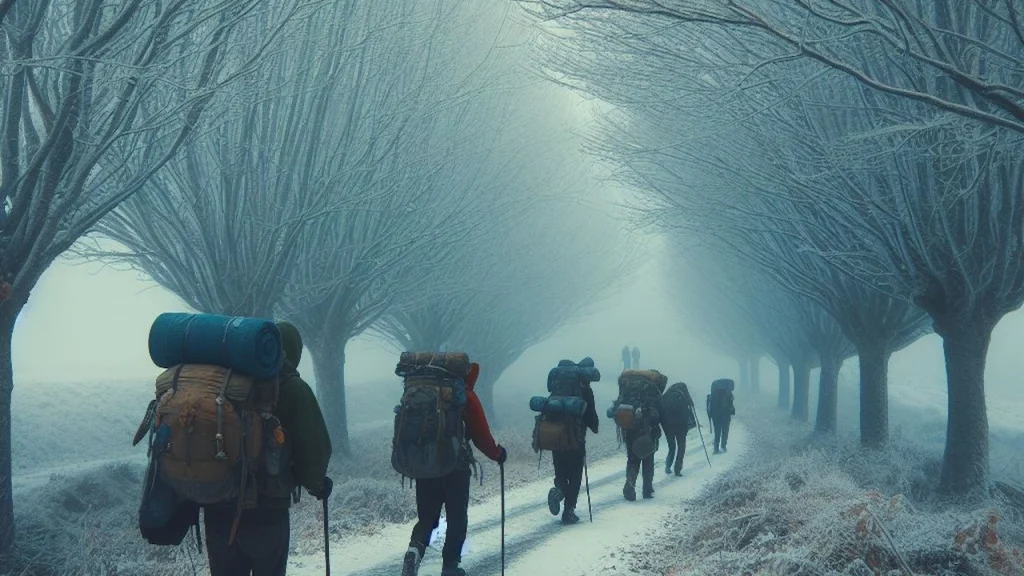
Accommodation in Winter
Securing lodging along the route is crucial when planning your Camino. Many albergues close in the cold months, making advance reservations essential.
Booking Rooms
- Reserve private rooms in albergues, hostels, pensions, hotels, etc. 1-2 months in advance whenever possible. Popular destinations like Santiago, Sarria and Leon often fully book for the winter months.
- Compare rates, amenities, reviews and cancellation policies across options. Albergue rates are ~$20-40/night, while hotels run $60-100+.
- Use sites like booking.com, hostelworld.com, and individual accommodation websites to research and reserve rooms.
- Consider travel insurance allowing cancellation reimbursement if plans must change due to weather, injury, etc.
Choosing Lodging
- Seek albergues and hotels with good central heating, warm bedding like down comforters, and hot water for showers. These amenities become necessities in winter.
- Municipal albergues often have better invierno facilities than private ones, as they are kept open year-round to accommodate pilgrims.
- In major cities like Pamplona, Burgos and Leon, hotels provide more amenities and comforts compared to albergues. Treat yourself after long days on the trail.
- When camping, prepare for freezing temps and snow. Use a 4-season tent, insulated sleeping pad, and winter-rated sleeping bag. Cook with a backpacking stove.
Booking Albergues
Albergues are the traditional pilgrim hostels along the Camino, offering bunk beds in shared rooms for €15-30 per night. Here are tips for reserving spots:
- Use well-known camino websites to search and book beds. For example, I found a listing for the “Albergue Turístico Seminario Mayor San Martín Pinario” in Santiago de Compostela on Gronze. It’s a church-run albergue open year-round, with beds from €22 per night.
- Check individual albergue sites like Alberguesantiago, which has an online reservation form and English translations. This is the official Santiago Municipal Albergue site, open during the winter months with bunks from €18 per night.
- As some albergues don’t list on the aggregate sites. Search “[village name] albergue camino” to find ones along your chosen route.
- Search for municipal albergues on caminodesantiago.gal, the Galician government site. For example, their Albergue de Fisterra has excellent facilities and beds for €10-15 nightly.
- When booking, have your name, nationality, dates, email/phone and payment method ready. Most require a credit card to guarantee the reservation.
- Look to reserve 60-90 days in advance for popular stops like Sarria, Portomarin, Melide, Arzua, etc. These albergues fill up.
- Reconfirm your booking via email a few weeks and again a few days prior to arriving. Check for any closure updates.
- Upon arriving, present your credencial del peregrino (pilgrim passport) to get the discounted albergue rates.
Managing Costs
- Budget $15-100/night for accommodations depending on type. Prices rise closer to the Christmas and New Years holidays.
- Lodging a bit outside city centers may be 10-20% cheaper. Consider splitting the cost of private hotel rooms with other pilgrims when possible.
- Having an extra $200-300 cash or credit as backup provides flexibility to get hotels/taxi if faced with unexpected route closures or storms.
Final Tips
- Travel insurance is a must for all pilgrims. You never know when you might slip on ice, get frostbite, or need to be airlifted to a hospital. Better safe than sorry. For example, one of my fellow pilgrims broke his ankle on a snowy descent and had to be taken to the nearest clinic by helicopter. His insurance covered the cost of the transport and the treatment, saving him thousands of euros.
- Have some extra money for emergencies. Sometimes the weather might be too harsh or the trail too dangerous to continue on foot. You might need to take a bus or a taxi to the next town or skip some sections altogether. For example, I had to take a bus from Burgos to Leon because the Meseta was covered in snow and there was no shelter or services for miles. It cost me 15 euros, but it was worth it to avoid the risk of hypothermia or getting lost.
- Make friends with other walkers. They are a rare breed and you will share a special bond with them. You can also help each other out in case of trouble, share tips and resources, and enjoy the company of fellow adventurers. For example, I met a couple from Germany who had a spare pair of gloves that they lent me when I lost mine. They also invited me to join them for dinner at a cozy restaurant that they had found online.
- Check the websites of the towns you plan to visit. Some of them might have useful information about road conditions, weather alerts, or local events. You don’t want to miss out on a festival or a celebration just because you didn’t know about it. You also don’t want to get stuck in a town that has nothing open or no accommodation available. For example, I checked the website of Santiago de Compostela before arriving and found out that there was a Christmas market and a concert in the cathedral square. I also booked a room at a hostel that was open and had good reviews.
- Be flexible and adaptable. The winter Camino is not for the rigid or the stubborn. You might have to change your plans, skip some stops, or take detours depending on the circumstances. Don’t let that discourage you or ruin your experience. The Camino is full of surprises and challenges, but also rewards and beauty. For example, I had to skip O Cebreiro because the road was blocked by snow, but I discovered an alternative route that took me through a beautiful forest and a charming village.
The winter Camino is not for everyone, but if you are up for it, it can be one of the most rewarding and memorable experiences of your life. You will see the landscape in a different light, enjoy the peace and quiet of the trail, and feel a sense of accomplishment like no other. You will also meet some amazing people along the way who will enrich your journey and your life.
If you are ready to brave the elements and embrace the adventure, then pack your bags, lace up your boots, and head to Spain. The Camino awaits!
Frequently Asked Questions (FAQ’s)
Here are some answers to the FAQ’s about walking the Camino de Santiago in winter:
Q: Do people walk the Camino in January?
A: Yes, it is possible to walk the Camino de Santiago in January. While the winter months see significantly fewer pilgrims, some do complete the Camino during this cooler season.
Q: Can you hike the Camino de Santiago in December?
A: December is another month when you can hike the Camino, though the weather may be wetter and colder. As long as you prepare with proper cold weather gear, hiking the Camino in December is certainly feasible.
Q: What is the weather like on the Camino de Santiago in winter?
A: The weather on the Camino in winter tends to be quite cold, with average highs around 50°F/10°C and average lows just above freezing. Expect freezing temperatures at night and in the early morning. There’s also a good chance of rain and possibly snow in the mountains. Proper layering is key.
Q: Can you walk the Camino all year round?
A: It is possible to walk the Camino all year round if properly prepared. The Camino is less crowded in winter which some pilgrims enjoy. However, be ready for cold, wet, and possibly icy conditions depending on the route. Many albergues are closed so planning accommodations is important.
Q: What is the best Camino route in winter?
A: The Portuguese Coastal Route is a good Camino route option in winter, as is the Camino Del Norte along the northern coast. The coastal routes tend to have milder weather than the interior routes.
Q: Are the Camino albergues open in winter?
A: Many albergues/hostels along the Camino are closed during the winter months. It’s important to check ahead and have reservations for hotels or alternate lodging if relying on albergues. The number of open albergues is limited.
